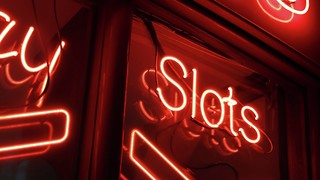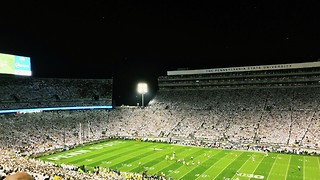Behind the Scenes: The Set Designer
Actor Fred Maynard crosses the dread techie/performer divide to talk to Sonia Tong, set designer of DNA, Endgame, Arcadia and the upcoming King Lear, about life as the unseen architect of the stage

How did you end up designing sets at Cambridge?
I had done some set painting at school, which was as close to designing anything as you could get – we usually just had a massive backdrop to fill in. I had also done directing, but the time commitments as an architect here meant I had to look for something a bit more flexible. So I signed up to the designer’s list and got an interview for the fresher’s show, where I was asked how I would decorate a platform. I improvised some ideas about a tree made out of scaffolding, which seemed to work. And suddenly, I was a set designer.
How much time do you spend designing a set? None of us actors ever see you do that bit of the job.
The actual designing doesn’t take too long. The most time is spent working out how what you’ve designed will actually stand up, or making sure the technical director can physically build what you’ve drawn. The actual designing usually seems to take place over a two-hour drinks session with the director. After that we’ll grab some images from the internet for the atmosphere and tone, and see if they add anything to our design.
How much of the cast do you see in the shows you design?
To be honest, not much; I obey the strict actor/techie divide [laughs]. I only knew the cast when I stage managed on Rhinoceros. One show was nice, we had a cast and crew meal, and I met about three of the actors [laughs]. No, while there are a very few actors who take it upon themselves to never talk to a techie, the vast majority are really nice. It can be annoying in a get-in when they feel they own the production and can forget you have been working on it as long or sometimes longer than they have, but it’s understandable, because they so rarely see us. It’s amazing when you’ve worked on a production with an actor multiple times and they still don’t recognise you. But I don’t want to aggravate this divide -
So what’s your favourite thing about us actors then?
I love the moment when they start to enjoy the space you’ve created, and add to it and bounce off it. I really feel that’s a great appreciation of your work.
Have you ever had a realisation at the last moment and changed everything around while the set is going up?
In Endgame, we had a very opulent but dilapidated set to begin with. Moth eaten curtains and beautiful wallpaper and suchlike. I even managed to find a stag’s head to put on the wall. I really loved that stag’s head. It was hard to find, I mean, it was a proper, full sized stag’s head. And I wanted it to be in the production so badly. But just before we went ahead complications with movement forced us to pare back everything to a very bare, clammy room. And the stag’s head had to go. Not a day goes by that I don’t think about it.
If you had an unlimited budget and any play to design for, and an infinitely sized theatre, how would you go crazy?
I want to do a German Expressionist play. Properly. There are pretty much no boundaries to what you can design. And the set designer is king in that kind of theatre. I would want massive vertical lines and metal girders and things. I want to dominate the play! [laughs] No, actually I never think about what to do before talking to the director first. They know the play better than you, and it’s their vision you fulfil.
How much creative freedom are you allowed within the director’s vision?
Usually we just start on the same page anyway. That’s why they gave the job. The individual little ideas I might come up with should be like extensions of the overriding ideas, and I can usually get them through, since I have been fortunate to have a very good relationship with my directors so far.
Where do you feel at home in the ADC?
The scene dock. But really I just pop in and out even there. And I watch the play from the audience, I don’t hang around backstage; you want to see your creation. Set designers can often be only a flying visitor to the theatre. In one sense, we’re architects, and once we’ve done our job, it’s done and we are no longer necessary. Like the girl in Inception. However, like Inception, things can get messy on the way and we do need to be along for the ride. The ADC, try though it does, is not a professional theatre, and my role can include the painting and building and suchlike. Which is fine, we’re short of hands, but I wish people would remember that carving things out of wood is not necessarily my forte just because I designed the thing!
Can it be physically demanding, then?
Not if it’s a nice big ADC mainshow, usually the really heavy lifting can be done by someone else. If it’s in the Fitzpatrick or is a lateshow, though, you may find yourself becoming an all-purpose handyman.
What advice would you give to freshers wanting to get involved in set design?
Watch a lot of theatre. Don’t be afraid of the technical jargon the techies use. I’ve done it for a year, I still don’t know a word of it. Be ambitious with your ideas, even if they will probably be pared down by the director, you never know what might work.
A good set designer must be in a lot of demand, I suppose?
There’s only a very few regular set designers. So once my name got passed around, I was never short of requests for help. It’s quite nice, really.
Can set designers have an individual style?
I don’t think so, in my experience. We are asked to do pretty much anything the play requires. There is no continuity at all between the twisted metal pipe backdrop I did for DNA and the lavish 18th century interior of Arcadia. We work on such a range of material that you have to just apply yourself differently every time.
Do you prefer designing abstract or realistic sets?
I prefer abstract sets, because of the freedom you get. I don’t like working with box sets so much. You’re already constrained enough on a stage without making an even smaller space to work in. And you usually have to use the same flats every time, and you have to rent them from the ADC and use only certain paints on them. It’s very complicated.
What’s gone wrong with your sets?
On Arcadia we were running out of money, bought a whole bunch of paint which we couldn’t afford to replace, and of course it was the wrong colour: very bright, Emma-hall coloured turquoise, which we didn’t want at all. I say “we”. I think it only annoyed me, and maybe the director for about a day. Everyone else was fine with it. [thinks for a moment] Maybe I was just annoyed because… actually, it probably didn’t matter. I can get a little obsessive over these things.
Doesn’t sound so bad. I quite liked the colour of the set myself.
But it was so obvious! It was all bright blue!
Do reviewers mention you?
No. But they mention the set, which is praise enough. And I don’t really care anyway, I just like being part of the backstage team and having the secret knowledge that you are instrumental to the whole thing. You’re hardly working as slave labour, you do it with friendly people and you do it because you want to.
Are there things that directors ask that you really don’t want to do?
Leaves. I have had to collect real, fallen leaves for the stage twice now. It is hellish. They dry and rot, and thanks to ADC safety regulations, you have to flameproof every one individually. And they go missing and get thrown away and they smell. I hate leaves. For a future project I’m going to have to flameproof hundreds of leaves individually and then spray-paint them white. Sometimes you wonder about this job.
 News / Uni welcomes new students14 August 2025
News / Uni welcomes new students14 August 2025 News / Trinity sells O2 Arena lease for £90m12 August 2025
News / Trinity sells O2 Arena lease for £90m12 August 2025 Features / The community Cambridge accommodation creates (and doesn’t)9 August 2025
Features / The community Cambridge accommodation creates (and doesn’t)9 August 2025 News / Locals urge University to fund River Cam repairs16 August 2025
News / Locals urge University to fund River Cam repairs16 August 2025 Features / Incoming freshers and their hopes, fears and expectations for Cambridge 12 August 2025
Features / Incoming freshers and their hopes, fears and expectations for Cambridge 12 August 2025









